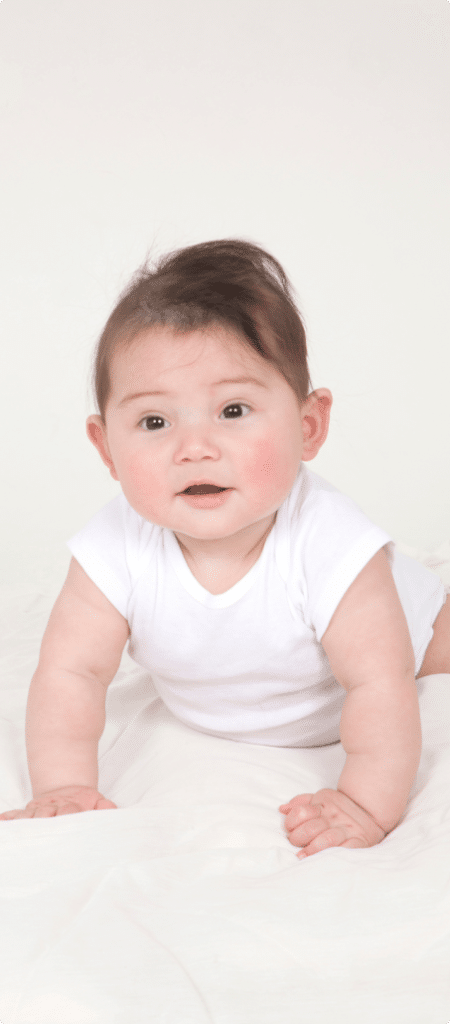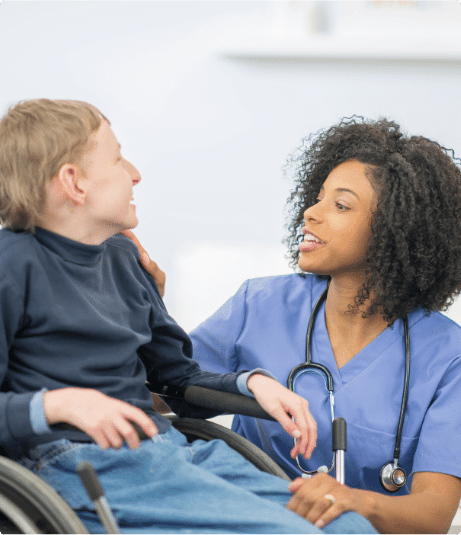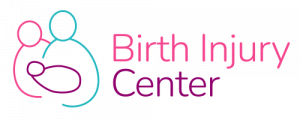What Is Cerebral Palsy?
Cerebral palsy refers to a group of neurological disorders that affect body movement and muscle coordination. It is one of the most common motor disabilities to appear in childhood.
Home > What Is Cerebral Palsy?
- Last Updated Date: March 24, 2025
Cerebral palsy is a result of brain damage or abnormal brain development that affects an individual’s ability to control their muscles. It is most likely to develop within the first month following a child’s birth, or even during the first years of their life when their brain is still developing.
Doctors and scientists used to believe that cerebral palsy was predominantly a result of oxygen deprivation during birth. However, recent research suggests that this actually accounts for a small number of cases. Congenital cerebral palsy, which is caused by abnormal brain development or damage occurring before or during birth, accounts for the majority (85%-90%) of all cases.
People with severe cerebral palsy may need to use special equipment to walk. Individuals with mild cerebral palsy, on the other hand, may show few symptoms. Although this disorder does not worsen with time, its presentation can change.

Types of Cerebral Palsy
Medical professionals classify cerebral palsy based on the type of movement disorder an individual exhibits. The main types of CP include:
Spastic Cerebral Palsy
This type affects approximately 80% of patients with cerebral palsy. People with spastic cerebral palsy have increased muscle tone or stiff muscles that make their movements appear awkward. There are several subcategories that doctors diagnose based on which muscles are affected:
- Spastic diplegia/diparesis: Muscle stiffness is mainly in the legs. Individuals may
find it difficult to walk since their tight leg and hip muscles make their legs pull
together, turn inward, or cross at the knees like scissors. - Spastic hemiplegia/hemiparesis: This type of spastic cerebral palsy, on the
other hand, affects one side of an individual’s body more than the other. - Spastic quadriplegia/quadriparesis: This is the most severe type of spastic
cerebral palsy. It affects the trunk, face, and all four limbs. Individuals with this
condition may not be able to walk.
Dyskinetic Cerebral Palsy
People with dyskinetic cerebral palsy have difficulty controlling the movement of their feet, legs, arms, and hands. Their movement may be uncontrollable, slow and writhing, or rapid and jerky. It can also be difficult to sit or walk. The disorder can sometimes affect the face and tongue, making it hard to suck, swallow, and talk. Muscle tone shifts from too loose to too tight and can change from day to day or even during a single day.
Ataxic Cerebral Palsy
Ataxic cerebral palsy makes it difficult for people to balance and coordinate their movements. They can be unsteady when walking and have a hard time with fast movements and movements that require a lot of control, like writing. In addition, they may find it difficult to control their arms or hands.
Mixed Cerebral Palsy
An individual can exhibit symptoms of more than one type of cerebral palsy, such as spastic-dyskinetic cerebral palsy.
Signs of Cerebral Palsy
There are a wide variety of signs that a child may have cerebral palsy. The most common signs and symptoms are impaired coordination, movement, speech, eating, and overall development.
Movement and Coordination
Cerebral palsy affects movement and coordination, resulting in symptoms including:
- Muscle stiffness: This is sometimes accompanied by exaggerated reflexes.
- Differences in muscle tone: A child might seem either too floppy or too stiff.
- Difficulty walking: Examples include a crouched gait, walking on toes, or crossing knees.
- Favoring one side of the body: For example, a child might drag one leg while crawling or only reach with one hand.
- Difficulty with fine motor skills: This can include picking up utensils or buttoning clothes.
- Ataxia: A symptom characterized by a lack of muscle coordination and balance.
- Unusual movements: A child might exhibit jerky, involuntary movements, tremors, or slow and writhing movements.
Speech and Eating
Speech and eating can be difficult for a child with cerebral palsy. They might exhibit:
- Delayed speech development
- Excessive drooling or difficulty swallowing
- Difficulty speaking
- Difficulty eating, chewing, or sucking
Development
A child with cerebral palsy can experience development that is delayed or unusual for their age, including:
- Learning difficulties
- Intellectual disabilities
- Delays in developing motor skills, such as crawling or sitting up
- Delayed growth that causes a smaller sized body or small body parts
Other Problems
Cerebral palsy affects movement and coordination, resulting in symptoms including:
- Seizures (epilepsy)
- Difficulty hearing
- Bladder and bowel problems, including urinary incontinence and constipation
- Mental health conditions, emotional disorders, and behavioral issues
- Vision problems and abnormal eye movements
- Abnormal pain or touch sensations
As a child grows, some symptoms may become less or more apparent. Muscle rigidity and shortening, in particular, may worsen if not treated aggressively.
When to See a Doctor
You should reach out to a doctor immediately if you notice any signs of cerebral palsy in your child. For an infant below six months of age, they include:
- A lagging head when the child is lying on their back or when you pick them up
- Stiff muscles
- Floppy muscles
- Legs that scissor or cross when you pick up the baby
- Constant pushing away from you
A baby between six and 10 months of age might:
- Not be able to roll in any direction
- Not be able to bring their hands together
- Experience difficulty bringing their hands to their mouth
- Reach out with one hand and keep the other in a fist
A baby older than 10 months might:
- Crawl crookedly, pushing off with one hand and leg and dragging the opposite hand and leg
- Scoot around on their buttocks or hop on their knees instead of crawling on all fours


Preparing for Your Appointment
Before you take your child in for a doctor’s appointment, be sure to prepare the following information:
- Symptoms that concern you
- When you began to notice the symptoms
- Details about your pregnancy and delivery
- Any medications, vitamins, or other supplements that you give to the child
- The child’s medical history
The doctor should be able to answer any questions you might have and recommend certain screenings and tests.
Options for Screening and Diagnosis
Developmental Monitoring
Doctors who suspect cerebral palsy will monitor a child’s growth and development over time. At a series of appointments, they will make note of any concerns the parents have, update the child’s developmental history, and observe the child’s movement.
Developmental monitoring is crucial, especially for children at a higher risk of cerebral palsy due to low birth weight or preterm birth.
Developmental Screening
Developmental screening should be done at crucial points in a child’s development — nine months, 18 months, 24 months, and 30 months. At nine months, a doctor can identify many issues with movement, but any undetectable problems are much more likely to be clear at future screenings.
Developmental Evaluations
Developmental evaluations aim to identify the specific type of disorder that is affecting the child. A doctor will carefully assess the child’s muscle tone, motor skills, posture, and reflexes, examine movement and reflexes, and take an accurate medical history from the parents.

Medical Evaluations
Specific medical tests can be more conclusive than screenings. These tests can help physicians diagnose cerebral palsy and rule out other conditions.
Cranial Ultrasounds
Cranial ultrasound uses sound waves to capture images of the brain. It is typically used in the first month of an infant’s life because it is less invasive than other neuroimaging techniques. During this test, a radiologist moves a transducer (probe) above the infant’s soft spot (fontanelle) to get images of the inner fluid chambers and brain that are then displayed on a monitor.
Cranial ultrasounds typically cause no discomfort and the whole process takes about 20-30 minutes. The test does not diagnose cerebral palsy directly, but it helps evaluate other medical conditions, including excessive fluid or brain hemorrhage, that can affect an infant’s brain and lead to cerebral palsy.
CT Scan
Computerized tomography takes pictures of the infant’s brain and skull using an X-ray machine. It takes about 10-15 minutes or longer, depending on the number of images and whether or not sedation is needed.
MRI
MRI (Magnetic Resonance Imaging) takes images of a child’s brain and spine using magnetic fields. This type of neuroimaging provides detailed images and can therefore lead to a more definitive outcome than a CT scan or ultrasound.
During the procedure, a doctor will place the infant’s head in an MRI scanning machine that will take pictures of their brain. It is painless and safe but can take more time than other options. The baby must remain still during the scan, which is often difficult, so doctors often use sedation to help infants stay calm. The infant will be closely monitored to ensure their safety throughout the procedure.
Other Tests
A doctor might order other tests and evaluations to help them diagnose cerebral palsy or linked conditions.
These tests may include:
- Hearing tests
- Vision tests
- Blood tests that look for genetic and metabolic abnormalities
- Speech and language tests
- Oral motor tests that evaluate feeding and swallowing
- Neurological evaluations, including electromyography (EMG), that measure a muscle’s reaction to nerve stimulation
- Cognitive functioning tests
- Gait testing to evaluate movement problems
- Occupational and physical therapy evaluations
Cerebral Palsy Treatments & Therapies
Medication can treat several symptoms of cerebral palsy, including seizures, spasticity, and involuntary movements. The doctor may prescribe different classes of medications to children with this disorder. These include:
- Anticholinergics: Drugs that block the neurotransmitter acetylcholine
- Benzodiazepines: Sedatives that can treat seizures, anxiety, and insomnia
- Anti-inflammatories: Drugs to reduce pain and inflammation
- Muscle Relaxants: Drugs used to relieve tight muscles
- Botox: An injection that treats spasticity in specific muscles
- Anticonvulsants: Drugs that suppress neurons that lead to seizures
- Antidepressants: Drugs prescribed to treat symptoms of depression
Medication can also treat secondary disorders such as acid reflux, behavioral disorders, and incontinence caused by cerebral palsy.
Medication can also treat secondary disorders such as acid reflux, behavioral disorders, and incontinence caused by cerebral palsy.
Several types of therapy effectively treat cerebral palsy symptoms by improving brain cognition and movement.
- Physical Therapy: A physical therapist implements techniques that relieve muscle stiffness and pain and improve coordination, balance, and mobility. They use special equipment to help the child move and live more freely and independently over time.
- Occupational Therapy: This type of therapy can help children with cerebral palsy learn to perform daily tasks and activities by improving cognitive ability and fine motor skills.
- Speech Therapy: Speech therapy can improve language and communication skills, allowing a child to become more confident in learning and socializing. In addition, it can help children who experience difficulties with eating and swallowing.
- Alternative Therapy: A type of therapy that helps children concentrate on themselves as individuals and overcome mental and physical obstacles. It includes music therapy, hippotherapy, acupuncture, aquatic therapy, and more.
A doctor may suggest surgical intervention for children with severe muscle and mobility problems. Surgery can improve or correct issues with legs, feet, ankles, wrists, arms, and hip movements, including:
- Correcting muscle contractures
- Preventing hip dislocation
- Reducing tremors
- Relieving joint and muscle pain
- Improving balance and coordination
- Improving posture
- Treating co-occurring conditions
- Correcting foot deformities
- Correcting fixed tendons and joints
- Correcting spinal curvatures
- Preventing spinal deformities
- Relieving stiff muscles
The two main procedures surgeons typically perform on patients with severe cerebral palsy are orthopedic surgery and selective dorsal rhizotomy.
This type of operation is often used to improve a child’s mobility. There are six common types of orthopedic surgery:
- Arthrodesis: A procedure that fuses bones together permanently
- Osteotomy: Realigns a patient’s bones to relieve problems with joints
- Muscle Lengthening: Used to reduce tension and tightness in muscles
- Tendon Lengthening: Relieves tightness in tendons
- Tendon Transfer: Affected tendon is surgically replaced
- Tenotomy/Myotomy: Cutting of the tendon (tenotomy) or the muscle (myotomy), which relieves tightness and makes movement easier
This complex procedure is usually only used in severe cases of spasticity, where other treatments have proved ineffective. A doctor will identify and cut nerves in the spine that are causing problems in certain muscles.
A doctor may recommend surgeries to address specific symptoms of cerebral palsy. These operations include:
- Cochlear implant insertion for children with hearing loss
- Insertion of a feeding tube (gastrostomy) for children with severe eating problems
- Implantation of a baclofen pump that delivers muscle relaxants to the spine
Special assistive devices can help patients with cerebral palsy who experience communication, vision, and hearing problems. These can include:
- Writing aids, such as pen or pencil grips
- Hearing aids
- Eye-tracking devices
- Typing aids
- Electronic communication boards
Children who experience movement difficulties can benefit from mobility aids customized to their individual needs. This assistive technology aims to help children with cerebral palsy move freely and can significantly improve their independence and quality of life.
Types of mobility aids include:
- Walkers
- Lifts
- Wheelchairs
- Standers
- Walking sticks
- Power scooters
- Canes
- Orthotic devices
- Crutches
Life Expectancy
Various factors affect the life expectancy of individuals living with cerebral palsy. People with less severe mobility problems, access to better medical care and assistive devices, and greater independence are more likely to live longer lives. Over 80% of children diagnosed with mild cerebral palsy live to be 58 or older, whereas those with severe cerebral palsy have a 40% chance of living past 20 years of age.
Cerebral palsy is not curable. However, it differs from many other serious health conditions in that it does not worsen over time. Therefore, many children diagnosed with cerebral palsy can expect a relatively normal life span.
Finally, it is worth noting that life expectancy is an estimate based on scientific and historical data, not a precise indication of how long an individual will live.

Raising a Child with Cerebral Palsy
Children with cerebral palsy have different experiences and needs, and so you cannot expect any one-size-fits-all piece of advice on how to raise and care for them. Caregivers and parents can expect to take on various responsibilities as their child grows up.
Many parents can feel a bit confused or lost once the doctor diagnoses their child with cerebral palsy. However, there are abundant resources available to help you provide your child with a healthy and fulfilling life.
Support Groups and Foundations
If your child has cerebral palsy, you can benefit by reaching out to other people going through a similar experience. National and local support groups exist to help parents find a community, create connections, and lean on one another during difficult times.
Some national support foundations include:
- Cerebral Palsy Foundation: This foundation contributes millions of dollars every year to cerebral palsy research and advocates for enhanced support for people with the condition.
- Reaching for the Stars: This parent-led advocacy group aims to accelerate research and raise awareness about cerebral palsy. It also serves as a platform for youths to share content and discuss the issues they face. The organization founded the CP Kids Coalition, which prepares parents to help their child transition to adulthood while living with cerebral palsy.
- March of Dimes: March of Dimes seeks to improve the health and wellness of new parents and babies with disabilities. It provides a supportive community that engages through online discussion boards and forums.
- Cure CP: This group raises funds and supports research for cerebral palsy.
Support group affiliates include:
- United Cerebral Palsy: Aiming to advocate, educate, and offer support services for people with cerebral palsy and other disabilities, United Cerebral Palsy strives for legal, technological, and sociological changes that allow individuals living with disabilities to achieve their goals.
- Parent to Parent USA: This organization seeks to ensure that children with special needs and their families can access support. The group has an extensive community network that brings support resources to families in need.
- The Arc: This group focuses on offering support to families and children with intellectual and developmental disabilities across the nation. It has more than 730 state and local chapters.
- Easterseals: Easterseals is a nonprofit organization that supports more than one million children and adults living with disabilities by offering residential services, medical rehabilitation, child care, adult day programs, recreation opportunities, and job training.
- Family Voices: This community support organization promotes quality health care for children living with disabilities by working closely with medical professionals and government leaders to ensure families can hear their voices.
Books
Reading books that explain cerebral palsy can help you to understand your child’s diagnosis better and encourage them to live their lives to the fullest. Some great books for parents and caregivers attending a child with cerebral palsy include:
- Kids Beyond Limits: The Anat Baniel Method For Awakening The Brain And Transforming The Life Of Your Child With Special Needs by Anat Baniel. This book covers several developmental disorders and highlights Baniel’s research on harnessing the brain’s capacity. The author emphasizes “connecting” instead of “fixing” to maximize potential in children with cerebral palsy.
- Cerebral Palsy: A Complete Guide For Caregiving (2006) by Freeman Miller and Steven Bachrach. Bachrach and Miller are cerebral palsy experts who wrote this book to answer many questions that parents and caregivers might have regarding cerebral palsy. They cover a number of topics, including mobility, nutrition, and assistive devices.
- Out Of My Mind (2010) by Sharon M. Draper. The novel narrates a story of an 11-year child with cerebral palsy and a photographic memory. It is a great read for parents and caregivers who struggle to interact with children and other individuals with disabilities.
Forums
Online platforms are useful places for families to share ideas, information, and advice. Children with cerebral palsy have their own unique experiences, but forums can help parents connect with families in similar circumstances. Some popular online groups include:
- The Cerebral Palsy Forum: This forum aims to connect parents of children with cerebral palsy as well as educators, healthcare providers, caregivers, and more.
- Mommies Of Miracles: This organization offers a network of products, services, and resources to inspire and educate mothers.
When to Seek Medical Help and Legal Counsel
You should speak to a doctor immediately if you have any concerns about your child’s health or development. However, it is worth noting that symptoms that sometimes indicate cerebral palsy can have different causes. A doctor can refer your child to specialists who will perform appropriate tests and make a diagnosis.
In some cases where cerebral palsy is a result of an injury your child sustained during birth, you may be able to hold the medical providers liable for medical malpractice. If you believe the condition was preventable and occurred due to negligence, you should immediately contact an attorney who has experience with birth injury law. The costs of care for children with cerebral palsy can be overwhelming, and you may be entitled to compensation for your and your child’s suffering. That’s why it’s important to take legal action immediately.
Written by:
Birth Injury Center Team
The Birth Injury Center aims to create informational web content and guides to help women and their families seeking support and guidance for birth injuries caused by medical negligence. All of the content published across The Birth Injury Center website has been thoroughly investigated and approved by medical expert Natalie Speer, RNC-OB, Attorney Ryan Mahoney.




